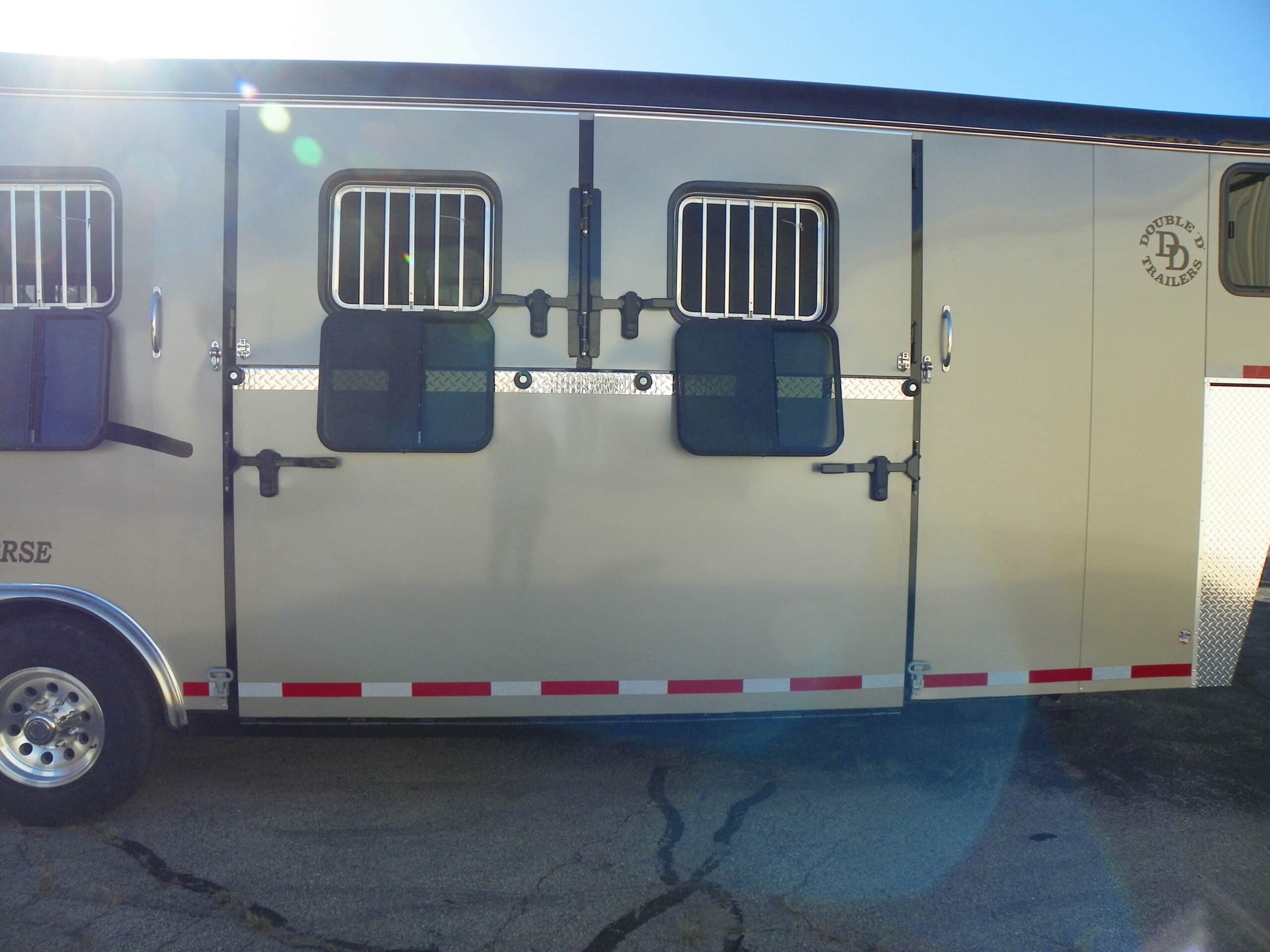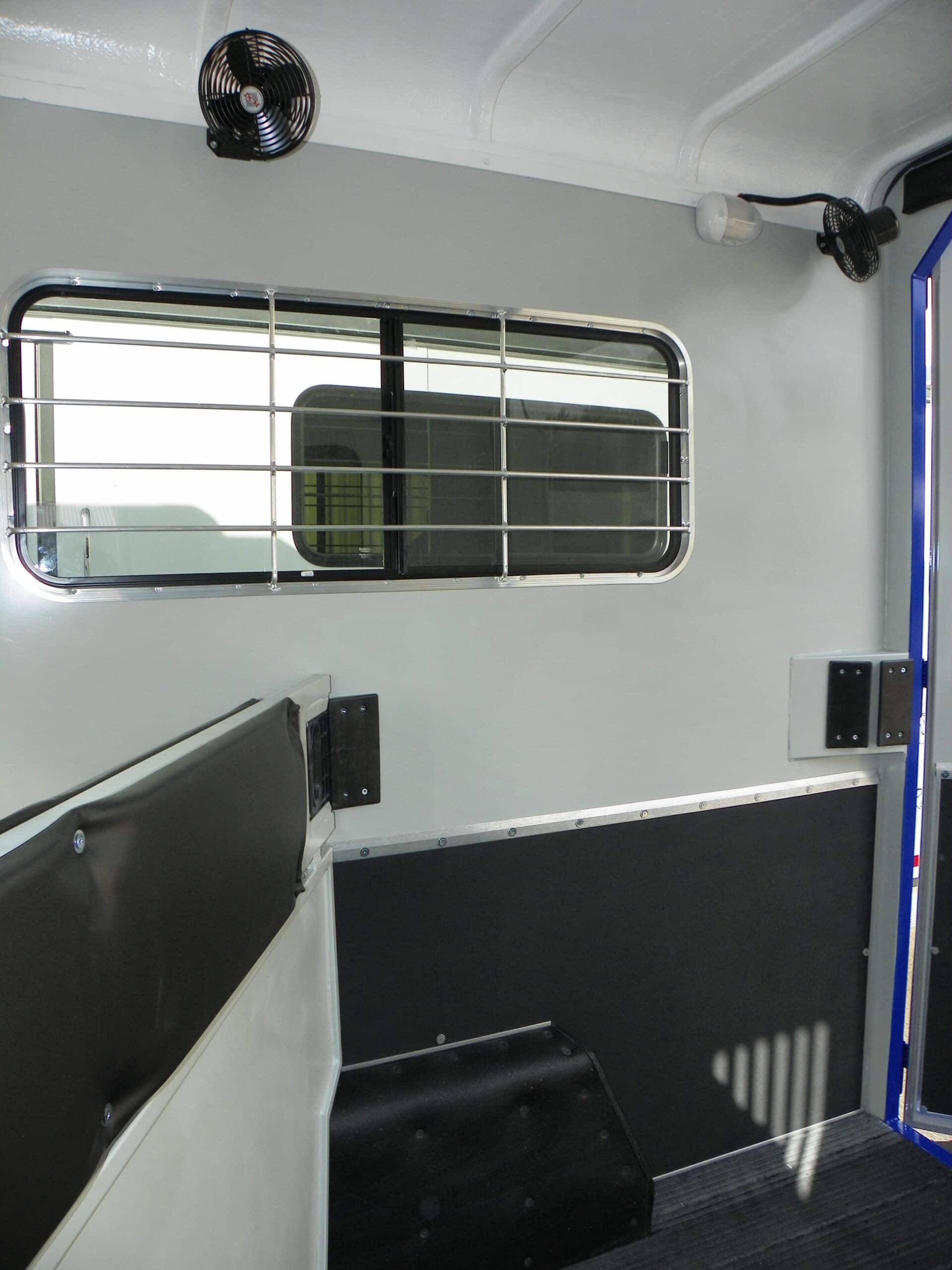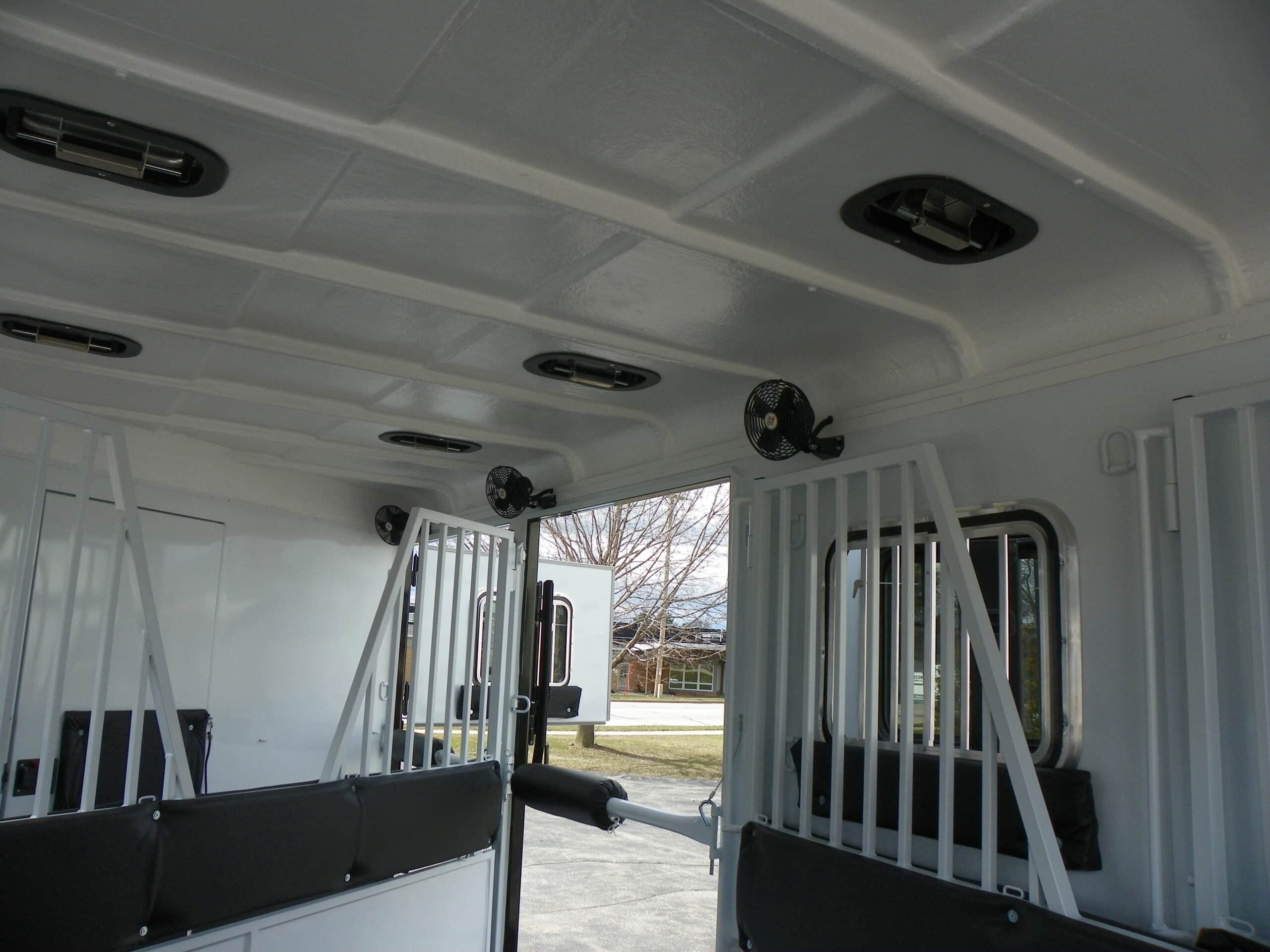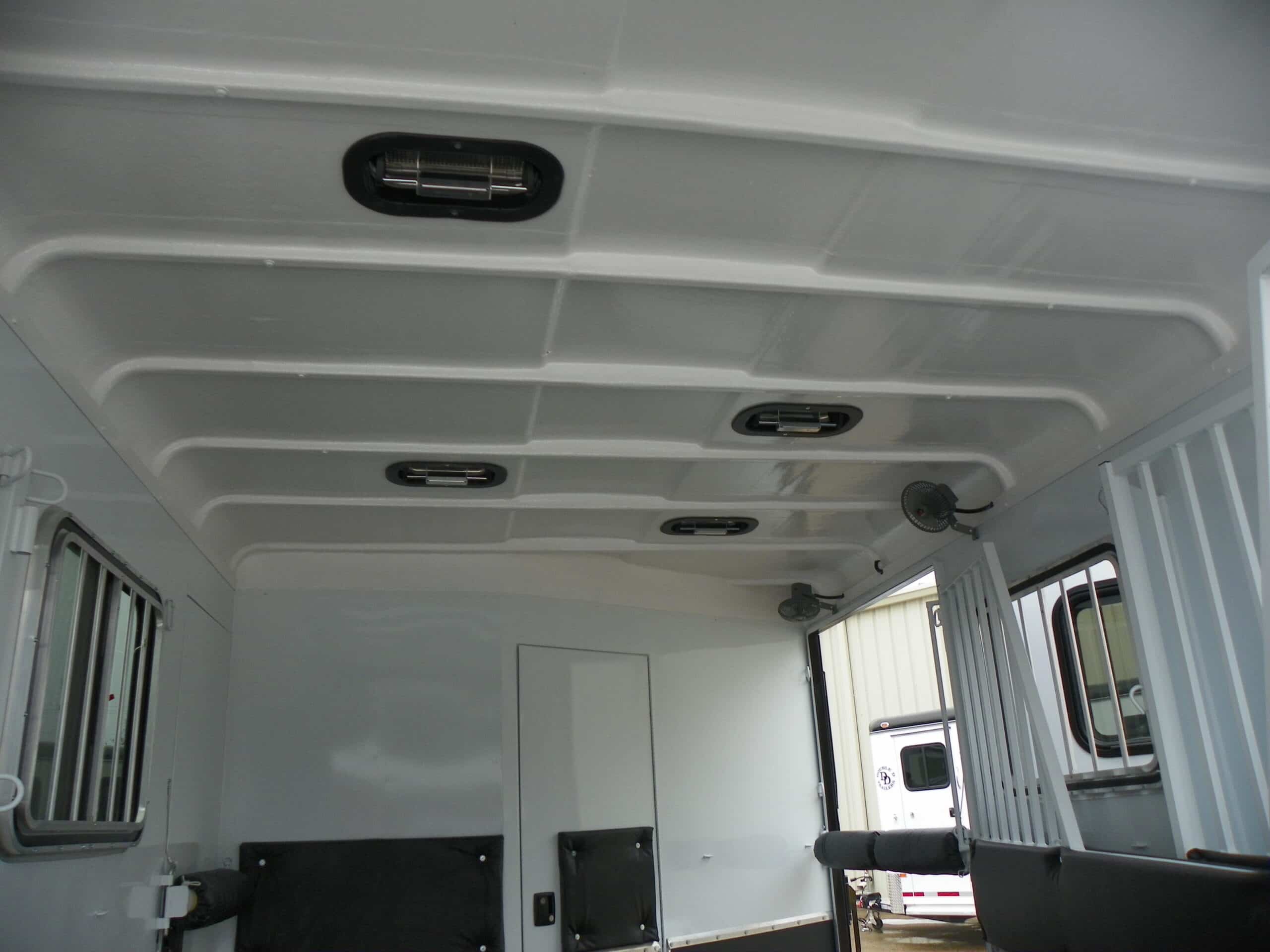Why Ventilation in Horse Trailers Matters: Keep Your Horse Cool, Calm, and Safe
Quick Answer: Why Ventilation Matters
Horses overheat quickly in confined trailers; when airflow is limited, interior temperatures can spike more than 20 °F above ambient. Lack of ventilation elevates a horse’s rectal temperature, heart rate and stress hormones, which can lead to dehydration, shipping fever and behavioral panic. Proper ventilation, large drop‑down windows, butt‑side sliders, roof vents and the insulated SafeBump® roof, keeps air circulating so your horse stays cool, calm and healthy.
Imagine this: Your horse is presented with two trailers...
One is well-lit and breezy, with fresh air circulating through large drop-down windows. The other is dim, stuffy, and radiating heat like an oven.
Which one would your horse willingly walk into?

For animals as sensitive (and as claustrophobic) as horses, ventilation isn’t optional. It’s essential for their comfort, stress levels, and long-term health during transport.
Let’s explore the science behind horse trailer airflow, how poor ventilation puts your horse at risk, and what Double D Trailers does differently to protect your horse inside and out.
Horses Overheat Fast And It Starts in the Trailer
Horses are far more prone to heat stress than people. They can’t pant like dogs, and sweating alone often isn’t enough to cool them down, especially in confined, poorly ventilated spaces. A 2007 study published in the Journal of Animal Science found that even short trailer rides can elevate rectal temperature, cortisol (stress hormone) and heart rate in horses, particularly when airflow is limited.
Key finding: Horses confined in non‑ventilated trailers showed significantly higher physiological stress markers than those with sufficient airflow. Overheated horses can become dehydrated, prone to shipping fever, physically exhausted and behaviorally anxious or panicky.
And the risk doesn’t stop when the trailer stops. Interior heat can spike by 20 °F+ above ambient temps when parked, especially in summer or when ventilation is inadequate.
What Proper Ventilation Looks Like
At Double D Trailers, we take airflow seriously. Every model is designed to allow continuous cross-ventilation from head to tail, even when the trailer isn’t in motion.
Our airflow features include:
Drop-Down Windows with Separate Bars
These large windows (with optional screens) allow air to flow through your horse’s head area without forcing you to lower protective bars.
Sliding Windows on the Butt Side
Every horse stall has a sliding window, encouraging cross-flow and reducing buildup of stale, humid air.
Overhead Roof Vents
Standard on all models, our roof vents push warm air upward and out, one of the most effective ways to prevent overheating in transit.
SafeBump® Roof Design
Our SafeBump® roof system isn’t just about preventing injuries. It’s engineered for insulation and temperature regulation, reducing heat buildup inside the trailer during hot weather.
Windows Matter More Than You Think
Many trailer buyers treat windows as an afterthought. But poorly designed, hard-to-reach, or too-small windows are one of the main causes of trailer heat stress.
We covered this in depth in our article:
🔗 Doing Horse Trailer Windows the Right Way
Some key takeaways:
- Cheap drop-down doors often hide tiny sliding windows that offer minimal airflow
- Competitor designs often place latches too high, forcing owners to climb or skip checking altogether
- Some brands even fake drop-down windows by bolting small RV-style panes into large panels
At Double D, we use Statewide-brand windows, chosen after testing multiple manufacturers. Their mid-latch system, full-frame glass, and rubber gasket seal offer superior airflow and user-friendliness, no leaks, no ladders, no frustration.
Bonus Tip: Always pair drop-down windows with screens to prevent road debris and bugs from bothering your horse’s eyes during travel.
Why Poor Ventilation Leads to More than Discomfort
Ventilation isn’t just about temperature. It directly affects your horse’s physical health and emotional willingness to load.
- Horses are prey animals. They’re naturally wary of dark, enclosed, or stale-smelling spaces.
- When they associate your trailer with discomfort or overheating, loading becomes a fight.
- Over time, horses hauled in poorly ventilated trailers show increased resistance, sweating, travel fatigue, and even refusal to enter.
That’s why we build custom horse trailers designed to meet all four of your horse’s basic needs: Light. Space. Air. Safety.
Ventilation is the “air” part and it's critical.
Want Better Ventilation for Your Horse?
Here’s how we make airflow safer, smarter, and easier:
- Full-sized windows with mid-latch access
- Flow-through stall ventilation: butt-side, head-side, roof
- Optional stall fans for extreme conditions
- Insulated SafeBump® roofing to deflect heat buildup
- Custom layout options to suit your hauling style
All backed by the only rear-facing trailer design (SafeTack® Reverse) that makes loading and unloading less stressful by default.
Why is ventilation so important in a horse trailer?
Ventilation regulates temperature, reduces humidity, and removes stale air, all of which are critical for a horse’s health during travel. Poor airflow can lead to overheating, dehydration, stress, and even illness like shipping fever. Proper ventilation helps your horse stay calm and cool, especially in hot weather or long hauls.
What are the signs my horse is overheating in the trailer?
Common signs include excessive sweating, restlessness, high respiratory rate, refusal to load next time, and arriving at your destination visibly agitated or fatigued. In extreme cases, overheating can cause collapse or heat stroke. That’s why airflow isn’t just about comfort, it’s about safety.
Do drop-down windows provide enough airflow?
It depends on the design. Small sliding windows inside large panels provide minimal airflow, especially when bars can’t be opened independently. At Double D Trailers, we use full-sized drop-down windows with separate bars and mid-height latches so owners can quickly adjust airflow for each horse.
Can airflow prevent loading issues?
Yes. Horses are prey animals and naturally avoid dark, stuffy, enclosed spaces. Trailers with poor ventilation feel like a trap, causing resistance or panic. Bright, open trailers with a breeze flowing through are far more inviting making loading easier and safer for nervous horses.
How does SafeBump® help with ventilation?
SafeBump® is an insulated, one-piece roof system that helps regulate interior temperature. It reflects heat away from the trailer and helps maintain a more stable environment inside, even in summer heat. Combined with roof vents and airflow windows, it prevents dangerous heat buildup.
What’s the best way to improve airflow in a horse trailer?
Look for trailers that offer:
- Full-sized drop-down windows on the head side
- Sliding windows on the butt side for cross-ventilation
- Overhead roof vents at each stall
- Optional fans for added circulation
- Bright interiors and insulation to reduce heat absorption
Double D Trailers include these by default, no retrofitting required.
Take the Next Step Toward a Cooler, Calmer Haul
Schedule a 1-on-1 design call with our team — no pressure, just solutions.
See how SafeTack® Reverse helps anxious horses →
Browse our custom horse trailer models →







